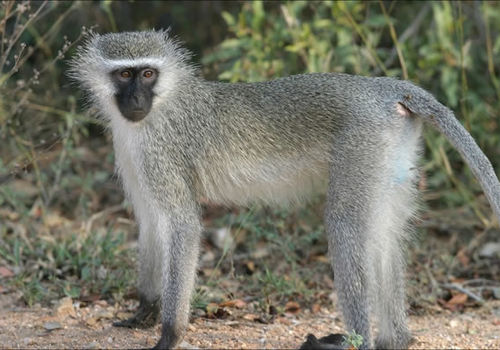
Vervet monkey
Cercopithecus pygerythrusVervet monkey
Introduction: The vervet monkey (Cercopithecus pygerythrus) is a predominately savannah woodland species, generally absent from open scrubland and open grass. They will penetrate totally unsuitable terrain, to settle along rivers and streams that provide fruit-bearing trees. This adventurous streak accounts for commando-style raids on lodges and campsites. The vervet are highly social animals, and occur in well-organised troops. The dominant hierarchy within the troop is maintained by threat and aggression. Fighting is one-sided and non-retaliatory. When a subordinate member is bitten, it redirects its anger to the next member down the order.
Distribution: In Namibia the vervet monkey is found around the Orange River, in the north eastern Caprivi Region and the rocky hills in the Grootfontein and Tsumeb districts.
Diet: Vervet monkeys tend to be omnivorous, feeding on fruit, flowers, leaves and insects, which constitutes the bulk of their diet. It is unusual even when hungry to swallow food directly after chewing, and it is usually stored in their cheek pouches.
Colouring: Silver - grey hair and black face fringed with white. The male vervet has a bright blue scrotum, an important symbol of its status in the troop, as a green one is a sign of immaturity!
Breeding: Female vervet monkeys do not pass from male to male during their 'receptive period'. They are a seasonal breeder with single young born between March and May after a gestation period of 140 days. Troops will accept strange young juveniles.
Size: Males have a mass of 6kg and measure 1.1m in length. Females are slightly smaller and weigh only 4kg.
Klein Windhoek

